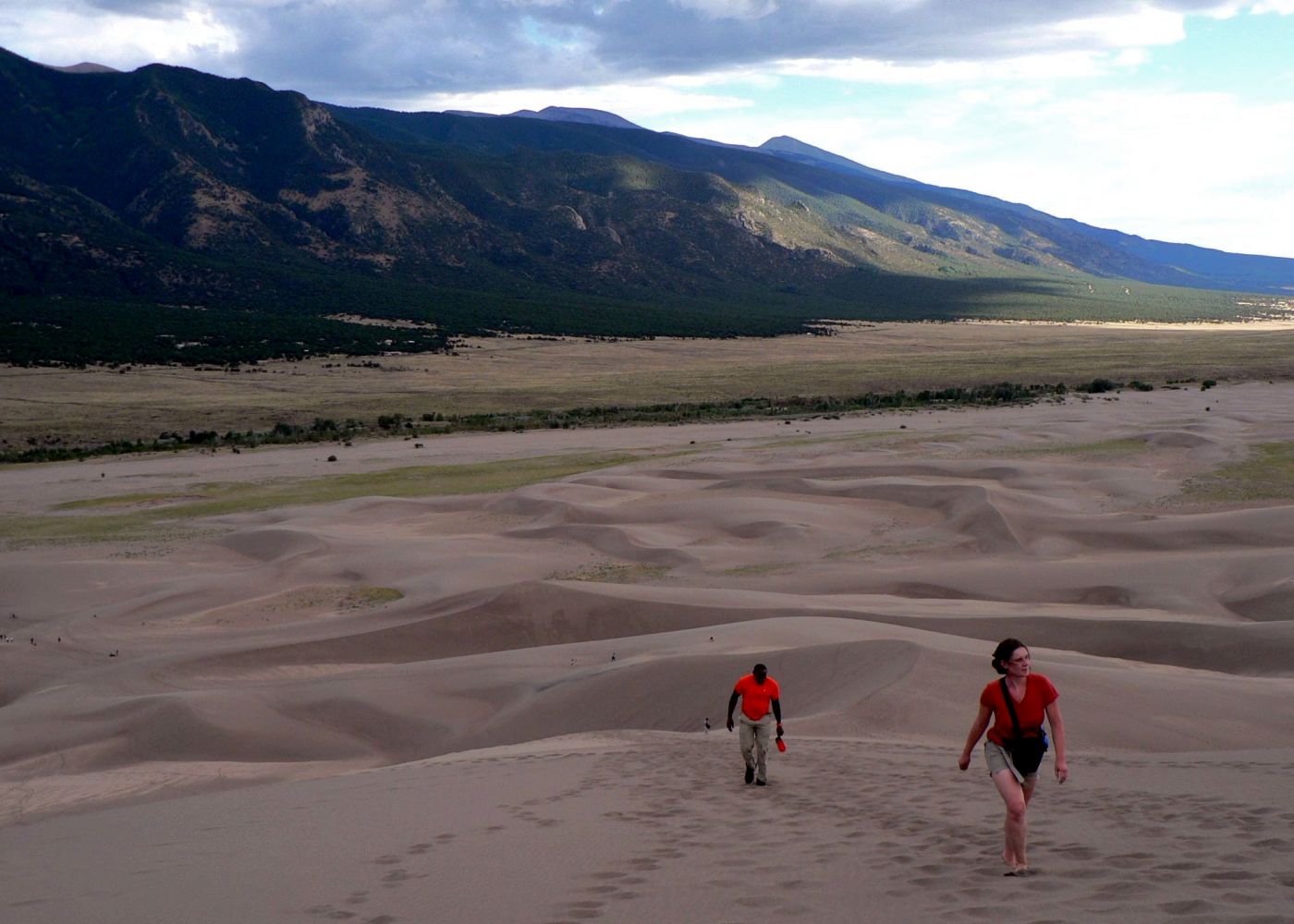As a Coloradoan, I'm proud that many in our state stood up for Black lives through peaceful protest over the past months. Here and across the country, Americans are rising to say that everyone deserves to live in a safe and healthy community— free of racial injustices like police violence, unequal protection under the law and higher levels of pollution that disproportionately harm communities of color.
These issues are deeply intertwined with my work at the Sierra Club. As a community organizer working on public lands protection, I’ve challenged myself to reflect on lands conservation work.
Campaigning to protect public lands is often painted with a narrow brush— encapsulated by stereotypical themes of conservation like solo outdoor recreation, wildlife conservation and preservation of pristine land. But the work to safeguard land and water is so much more than that. How we choose to protect these places is deeply tied to societal, racial, and environmental justice.
Conservation of lands and water will inevitably shape our future. In order to safeguard our public health, the economy and give generations who come after us the opportunity to thrive, we have to look at conservation with a holistic and intersectional view. Protecting lands and waters is not just about the land, it’s about all of us. Forests, lands, and waters are key to the quality of the air we breathe, the water we drink, the food we eat—and to fighting the climate crisis.
The Congressional Select Committee on the Climate Crisis just released a report that includes a path forward for lands and waters in the United States— and solutions for the many communities who depend on these natural resources. The 500+ page analysis makes one thing clear: we need big, bold solutions that can lead us to a future free of climate destruction where no one gets left behind.
It was encouraging to see a new, strong approach to land and water management highlighted in the policy proposals. The committee’s report encourages the U.S. government to:
-
Protect at least 30% of all U.S. lands and waters by 2030.
-
Limit new leasing for fossil fuel extraction on public lands and offshore.
-
Protect and restore ocean and wetland ecosystems, forests, and grasslands to sequester carbon and improve nature's resilience to climate impacts, including wildfire and coastal flooding.
-
Create jobs through conservation and reclamation, reestablishing the Civilian Conservation Corps, creating a Climate Resilience Service Corps, and restoring abandoned coal mines and oil and gas wells.
The goal to protect 30% of natural spaces by 2030 will keep industry from dumping pollution into the air, and work to sequester existing greenhouse gases. But we need to act fast to turn these proposals into public policy before our remaining wild places are lost.
This means a drastic turnaround from the Trump administration’s land management practices. The current Interior Department is selling off as much public land to oil and gas corporations as possible. Their agenda is disproportionately harming Tribal Nations— like the Gwich’in Nation who is continuously fighting against oil drilling in the Arctic National Wildlife Refuge, their sacred homeland and ground zero for climate impacts. In New Mexico, the Pueblo, Hopi and Navajo Nations are campaigning to stop oil and gas drilling in the sacred greater Chaco landscape. In Colorado, the Sierra Club worked alongside frontline communities to stop fracking outside Great Sand Dunes National Park that would poison drinking water.
But still, we have seen our state’s Senator Cory Gardner support the Trump administration’s fossil fuel agenda unapologetically, while attempting to save face by pushing piecemeal approaches to environmental issues like land conservation and park maintenance. Climate solutions will require leaders who are willing to take on the whole system, not just score political points before an election.
Stopping dangerous fossil fuel projects is not enough. In addition to reversing the damage done over the past years, we must commit to proactive measures that make public lands a part of the climate fix. Right now, fossil fuels extracted from public lands are responsible for nearly a quarter of our country’s greenhouse gas emissions. It’s time to completely end the antiquated, dangerous practice of drilling for fossil fuels offshore and on public lands.

A youth-led rally at the Utah state capitol to call for public lands protections, climate action. | Photo courtesy of the Sierra Club Utah Chapter
Mining, drilling and fracking for dirty fuels has created an environmental injustice crisis. When the Bureau of Land Management auctions off large swaths of land for profit, we not only lose these spaces for conservation; we create sacrifice zones. Air and water pollution that goes along with extraction harms communities of color at a much higher rate than wealthy, white parts of the country.
This climate report lays helpful groundwork, but we need stronger action. We must stop oil and gas drilling on public lands and waters immediately, begin urgent restoration of damaged places, and conserve remaining wild spaces to work as carbon sinks.
Communities of color are demanding environmental justice. The importance of Tribal and community input in lands management practices cannot be overstated. Conservation decisions must be rooted in supporting neighboring communities, their health, economies and culture.
We should all join the call for Congress to protect 30% of lands and waters by 2030, prioritize frontline input and Tribal sovereignty, and make equity and justice the core of land management. Take action here to demand Congress put these words into action.
